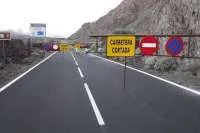Spain packing list: Essentials for every season
- 30-08-2024
- Travel
- Canarian Weekly
- Photo Credit: Freepik
Are you travelling to Spain? The key to a smooth and enjoyable trip lies in packing smartly. Spain's diverse climate and cultural richness mean you must prepare for different regions and seasons. Here's your ultimate guide to packing for Spain.
Essential Documents and Money
Before considering clothes and accessories, ensure you have sorted all your documents and currency. It will prevent last-minute panic and ensure a smooth trip.
Passport and Visa:
You can only travel with a valid passport, so, remember to check if you need a visa for Spain. While EU citizens, and those from the UK, don't need one, travellers from many other regions do.
Tip: Keep digital copies on your phone and email for easy access in case of loss.
Currency:
Spain uses the Euro (€). While cards are widely accepted, but cash is wise for small purchases and emergencies, so look for currency exchange options that offer reasonable rates and low fees.
Tip: It’s best to change your money before you go, but you can use ATMs in Spain for better exchange rates and convenience.
Travel Insurance:
Travel insurance is a must. Make sure it covers health, lost luggage, and trip cancellations, and can save you from unexpected expenses and hassles.
Tip: Choose a policy that includes Covid-19 coverage and emergency medical evacuation.
Clothing and Footwear
Packing the right clothes is crucial to enjoying your trip, as Spain's climate varies massively across regions and seasons, so you must pack accordingly. Here's a seasonal breakdown and regional considerations to help you out.
What to Wear in Spain by Season
Dressing appropriately for the season can make your trip more comfortable and enjoyable. Here's a guide to what you should pack for each season in Spain.
Spring:
Spring in Spain is pleasant, but temperatures can vary. Average temperatures range from 10°C to 20°C (50°F to 68°F). Pack light layers like t-shirts, light sweaters, and a jacket. Comfortable walking shoes are essential as you'll likely explore a lot on foot.
- Light layers (t-shirts, light sweaters): Adjust easily to changing temperatures.
- Jacket: For cooler evenings and occasional rain.
- Comfortable walking shoes: Spain's cities often have coblestone streets.
Summer:
Summer is hot, especially in southern Spain. Average temperatures range from 25°C to 35°C (77°F to 95°F), so opt for breathable fabrics like cotton and linen. Don't forget sun protection: hats, sunglasses, sunscreen, and sandals are great for keeping cool!
- Breathable fabrics (cotton, linen): Stay relaxed and comfortable in the heat.
- Sun protection (hat, sunglasses, sunscreen): Essential to avoid sunburn and heatstroke.
- Sandals: Perfect for beach days and city walks.
Autumn:
Autumn can be unpredictable, so layers are essential. Average temperatures range from 10°C to 25°C (50°F to 77°F), so bring scarves and waterproof shoes, as the weather can change quickly. Light sweaters and a rain jacket are also good choices.
- Layers (light sweaters, scarves): Stay warm and adapt to temperature changes.
- Waterproof shoes: Essential for rainy days.
- Rain jacket: Compact and protects against sudden showers.
Winter:
Winter in Spain varies. Northern regions can get quite cold, with temperatures ranging from 0°C to 10°C (32°F to 50°F), while the south remains mild, averaging 10°C to 15°C (50°F to 59°F).
Remember gloves and a hat for colder areas. Pack warm clothes such as sweaters, coats, and boots.
- Warm clothes (sweaters, coats): Essential for staying warm in colder areas.
- Boots: Good for both city walking and rural areas.
- Gloves and a hat: Protect against the cold in northern Spain.
Regional Considerations
Spain's diverse regions call for different packing strategies. Here's what you need to know whether you're heading to the coast, cities, or rural areas.
Coastal Areas:
Beachwear is a must for beach destinations. Also, remember swimwear, flip-flops, and a beach towel. A lightweight cover-up is useful for beachside restaurants.
- Beachwear: For relaxing and swimming at the beach.
- Swimwear: Essential for taking a dip in the sea.
- Flip-flops: Easy to wear and perfect for sandy beaches.
- Beach towel: Useful for lounging and drying off.
Cities:
In cities, you'll want to look stylish yet comfortable. Think of chic but practical clothing for walking around and visiting sites. Comfortable shoes are essential for exploring.
- Stylish, comfortable outfits: Blend in with the local fashion while staying comfortable.
- Comfortable shoes: Necessary for exploring city streets and landmarks.
Rural Areas:
Pack practical clothing for outdoor activities if you're heading to the countryside. Hiking boots, comfortable trousers, and layers are great for exploring the countryside.
- Practical clothing: Ideal for outdoor activities and hiking.
- Hiking boots: Provide support and comfort on rugged terrain.
- Layers: Adapt to varying temperatures in rural areas.
Toiletries and Health Items
Packing the right essentials will ensure you stay fresh and healthy throughout your trip.
Basic Toiletries:
Pack essentials like toothpaste, toothbrush, shampoo, conditioner, and deodorant. Travel-size bottles save space and comply with airline regulations.
- Toothpaste and toothbrush: Maintain oral hygiene.
- Shampoo and conditioner: Keep your hair clean and manageable.
- Deodorant: Stay fresh and odour-free.
- Travel-size bottles: Convenient and meet airline requirements.
Health Items:
Remember to carry any necessary medications. Travel-size hand sanitiser is a must, especially in busy tourist areas. Insect repellent can be handy during warmer months.
- Necessary medications: Ensure you have enough for the duration of your trip.
- Travel-size hand sanitiser: Maintain hand hygiene on the go.
- Insect repellent: Protect against mosquito bites in warmer areas.
Electronics, Accessories, and Internet Connection
Modern travel demands staying connected and capturing memories. Packing the right electronics and accessories will keep you plugged in and ready to share your experiences.
Electronic Devices
Mobile devices are essential for navigation, staying in touch, and capturing moments. Here's what you should bring.
Smartphone:
Your smartphone is your best travel companion for maps, photos, and keeping in touch. Ensure it's unlocked if you plan to use a local SIM card.
Tip: Install travel apps such as maps, translators, and local guides before you go.
Camera:
A good camera can help you capture stunning memories. Whether it's a DSLR or a compact digital camera, ensure it's ready for your adventure.
Tip: Bring extra memory cards and batteries to ensure you get all the great photo opportunities.
Travel Adapter:
Spain uses Type C and F sockets (230V, 50Hz). A universal travel adapter will keep your devices charged.
Tip: Check the voltage compatibility of your devices to avoid damage.
Accessories
Accessories can make your trip more convenient and enjoyable. Here are a few must-haves.
Power Bank:
A portable charger is essential for keeping your devices powered up during long days out. It ensures your phone is always ready for photos and maps.
Tip: Choose a high-capacity power bank to charge multiple devices.
Earphones:
Great for entertainment on flights, trains, or buses. They also help you enjoy some quiet time.
Tip: Noise-cancelling earphones can enhance your travel experience by reducing background noise.
Internet Connectivity
Staying connected while travelling is crucial. Here's how to ensure reliable internet access in Spain.
eSIM:
Tip: Install your eSIM before you travel to ensure immediate connectivity upon arrival.
Using an eSIM for internet access in Spain is a convenient and cost-effective option. Also, most iPhones are compatible with eSIMs.
Pros:
- Easy to activate before you travel.
- No need for a physical SIM card.
Cons:
- Not all devices are compatible.
Wi-Fi:
Tip: Consider using a VPN to encrypt your internet connection and protect your personal information.this
Wi-Fi is widely available in hotels, cafes, and public areas. However, connecting to public Wi-Fi networks can pose security risks, including data theft and malware attacks. Always use secure connections to protect your data.
Pros:
- It is readily available in many locations.
- Often free or included with your accommodation.
Cons:
- Public networks can be unreliable and slow.
- Increased risk of security threats.
Conclusion
Packing for Spain doesn't have to be stressful. You can ensure a comfortable and enjoyable trip by considering the season and your specific destinations. Use this guide to pack smart and make the most of your Spanish adventure!
Remember:
- Prepare for different climates and regions.
- Pack smart with versatile clothing.
- Ensure all essential documents and electronics are ready.
FAQs
What not to bring when travelling to Spain?
Avoid packing heavy or bulky items you won't use. Excessive electronics, too many shoes, or large amounts of cash are better left at home.
Other articles that may interest you...
Trending
Most Read Articles
Featured Videos
A Vision of Elvis Tenerife Promo
- 10-05-2025
TEAs 2025 Highlights
- 17-11-2025



























































